You can transform your smartphone into a powerful storytelling tool by mastering key visual narrative techniques. Start by choosing an engaging theme and sequencing your photos for maximum impact. Experiment with different angles and perspectives to add visual interest. Learn to leverage your phone's various camera modes and use light and shadow to create mood. Balance your composition across the series and enhance your narrative with editing apps. Develop a consistent visual style and share your story effectively on social media. By honing these skills, you'll reveal the full potential of your phone camera for crafting fascinating visual narratives.
Choosing a Compelling Theme
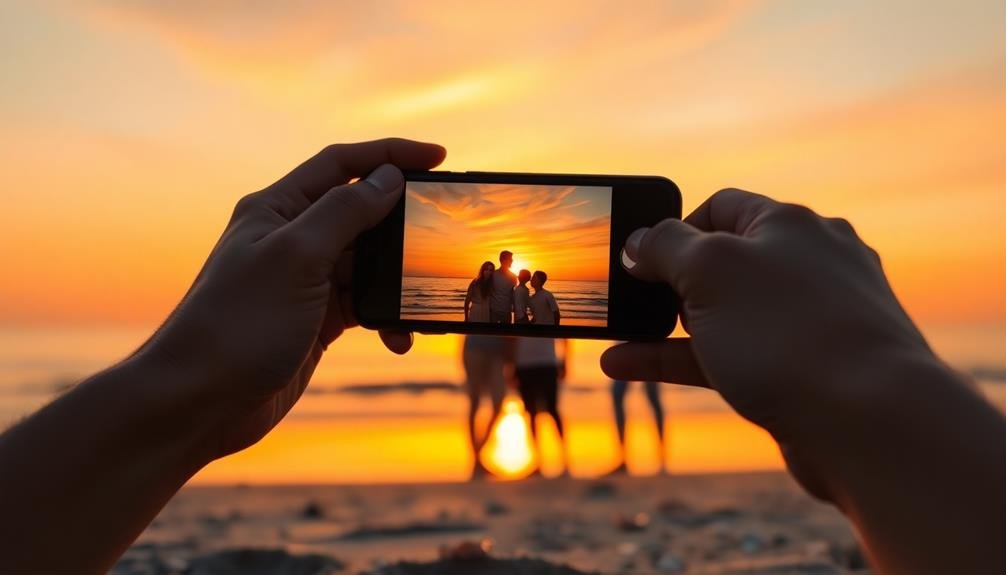
When you're diving into phone camera storytelling, selecting a compelling theme is your essential first step. Your theme acts as the backbone of your visual narrative, guiding your image choices and composition.
Start by reflecting on topics that resonate with you personally or issues you're passionate about. Consider current events, social causes, or everyday life moments that you find intriguing.
Once you've identified potential themes, evaluate their visual potential. Ask yourself if the theme can be effectively conveyed through images alone. Some themes, like "urban isolation" or "the beauty of decay," naturally lend themselves to visual storytelling.
Others might require more creative thinking to translate into compelling imagery.
Next, research your chosen theme thoroughly. This knowledge will help you identify key elements to capture and avoid clichés.
Consider how you can present a unique perspective on the subject. Remember, the most powerful themes often evoke emotion or challenge viewers' perceptions.
Sequencing Photos for Impact
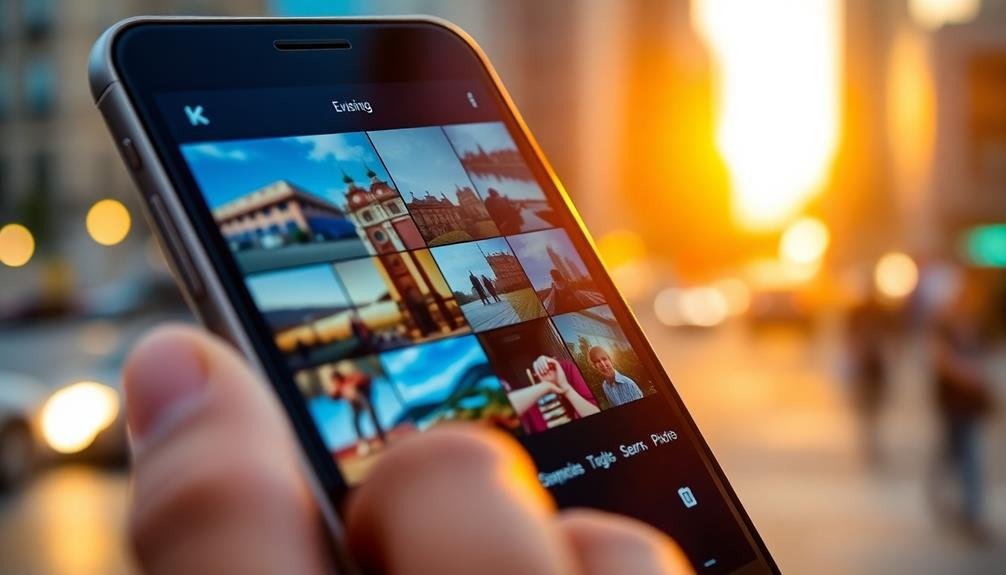
When you're crafting a visual story with your phone camera, the order of your photos matters just as much as their content.
You'll want to establish a clear visual flow that guides viewers through your narrative, building tension and curiosity along the way.
Establish Visual Flow
Creating a compelling visual narrative isn't just about taking great individual shots—it's about how you sequence them. Establishing visual flow is essential for guiding your audience through your story seamlessly. As you arrange your photos, consider the emotional journey you want your viewers to experience. Start with an attention-grabbing image that sets the tone, then build momentum through carefully chosen shifts.
To establish a strong visual flow:
- Use color consistency to link images
- Create rhythm through repeating shapes or patterns
- Vary image compositions to maintain interest
- Employ contrast to highlight key moments
- Gradually reveal details to build suspense
Think of your photo sequence as a conversation with your audience. Each image should naturally lead to the next, creating a cohesive narrative.
Don't be afraid to experiment with different arrangements to find the most impactful flow. Pay attention to how the eye moves from one image to another, ensuring a smooth visual journey.
Build Narrative Tension
Your photo story's power lies in its ability to build and release tension. To create narrative tension, carefully sequence your images to guide viewers through an emotional journey. Start with a compelling establishing shot that sets the scene and introduces your subject.
Then, gradually increase the intensity or complexity of your images, building anticipation and curiosity. Use close-ups and details to draw viewers in, revealing more about your story's characters or situation. Alternate between wide and tight shots to control pacing and create visual rhythm.
Incorporate contrasting elements or unexpected twists to keep viewers engaged and guessing. As you approach the climax of your narrative, intensify the visual tension through dramatic compositions, stark contrasts, or emotionally charged moments.
Finally, provide a resolution or conclusion that satisfies viewers' curiosity and completes the story arc. Remember to vary your shot types, angles, and perspectives throughout the sequence.
This diversity will maintain visual interest and help convey different aspects of your narrative. By thoughtfully arranging your images, you'll create a compelling visual story that captivates your audience from start to finish.
Create Emotional Progression
Emotional progression in a photo story can make or break its impact on viewers. As you sequence your images, consider how each photo builds upon the last to create a compelling emotional journey. Start with shots that set the mood and introduce your subject, then gradually intensify the emotional content as you progress through your narrative.
To create a powerful emotional progression in your photo story:
- Begin with establishing shots that provide context
- Introduce your main subject or characters early on
- Use close-ups to highlight important details or expressions
- Vary your composition to maintain visual interest
- End with a strong, memorable image that leaves a lasting impression
Pay attention to the pacing of your emotional progression. Don't reveal everything at once; instead, build tension and curiosity by carefully controlling what information you share and when.
Use contrasting images to create emotional shifts, such as following a somber scene with a moment of joy or relief. Remember that the order of your photos is just as important as their individual content.
Utilizing Different Angles and Perspectives
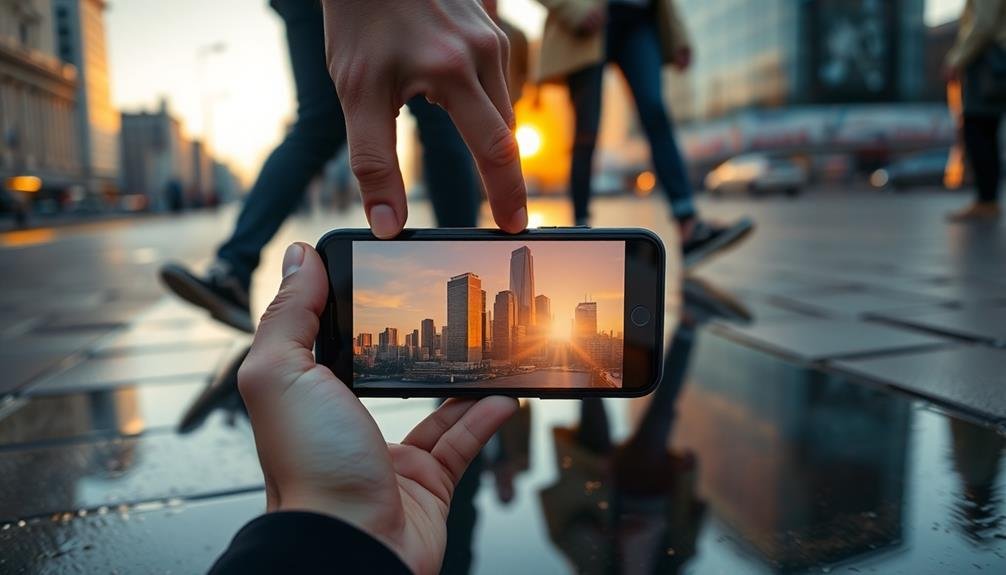
Experimenting with different angles can dramatically enhance your visual storytelling.
Try capturing low-angle shots to make subjects appear larger and more imposing, creating a sense of drama or power.
For a unique perspective, you can also explore bird's-eye view compositions by shooting from above, offering an all-encompassing overview of a scene or emphasizing patterns and spatial relationships.
Low-Angle Dramatic Shots
From the ground up, low-angle shots can transform ordinary scenes into dramatic, larger-than-life images. By positioning your phone camera near the ground and angling it upwards, you'll create a sense of power, dominance, or grandeur in your subject. This technique works particularly well for architecture, portraits, and action shots.
To capture compelling low-angle dramatic shots with your phone:
- Get as close to the ground as possible, even lying down if necessary
- Experiment with different angles to find the most impactful perspective
- Use leading lines to draw the viewer's eye upward
- Frame your subject against the sky for a striking contrast
- Incorporate foreground elements to add depth and interest
When shooting people, low angles can make them appear taller, more imposing, or heroic. For buildings, this perspective emphasizes their height and architectural details.
In nature photography, low angles can make flowers and small objects seem monumental. Don't be afraid to get dirty or look a bit silly while taking these shots – the results are often worth it.
Remember to keep your lens clean, as you'll likely encounter dust and debris when shooting from ground level.
Bird's-Eye View Compositions
Ever wondered how to make your phone camera shots truly stand out? Try incorporating bird's-eye view compositions into your visual storytelling. This unique perspective, taken from directly above your subject, can add a fresh and enchanting dimension to your photos.
To achieve a bird's-eye view, you'll need to position yourself higher than your subject. Use stairs, balconies, or even a selfie stick to gain elevation. Once in position, experiment with different angles and heights to find the most compelling composition.
Look for patterns, symmetry, or interesting arrangements that mightn't be visible from eye level. This technique works particularly well for capturing cityscapes, crowds, or intricate designs. It's also ideal for food photography, allowing you to showcase the full spread of a meal.
When shooting people, a bird's-eye view can create intriguing portraits or highlight group dynamics. Remember to keep your phone parallel to the ground for true top-down shots. Alternatively, try slight tilts to add depth and interest.
With practice, you'll master this powerful storytelling tool, elevating your phone photography to new heights.
Mastering Smartphone Camera Modes
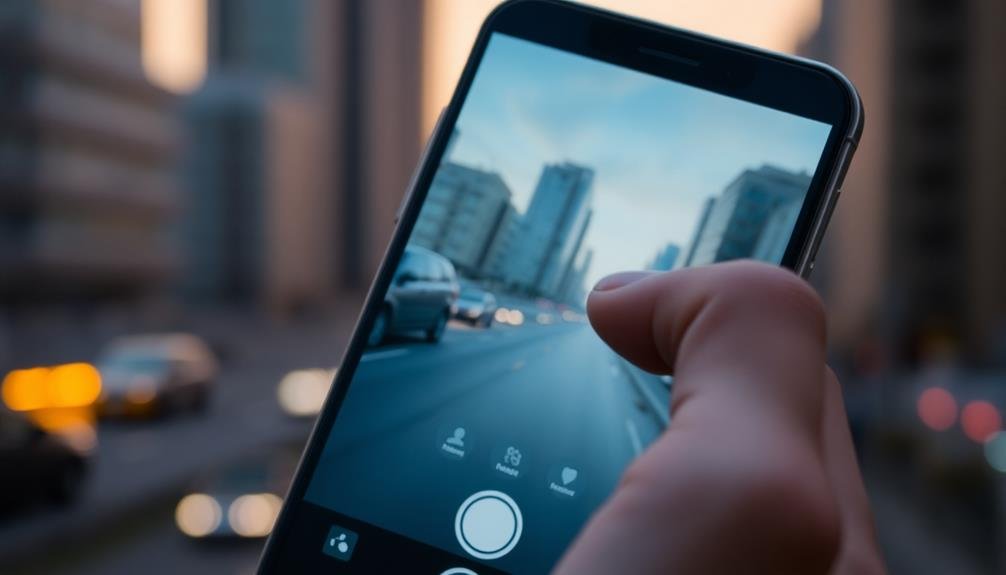
To elevate your smartphone photography, understanding and mastering the various camera modes is essential. Most modern smartphones offer a range of modes to enhance your shots in different situations.
Portrait mode, for instance, creates a shallow depth of field effect, perfect for capturing stunning headshots. Night mode allows you to take clear, well-lit photos in low-light conditions without using flash.
For action shots, try burst mode, which captures multiple frames in quick succession. This increases your chances of getting the perfect moment. Pro or manual mode gives you full control over settings like ISO, shutter speed, and white balance, allowing for more creative freedom.
Here are some key camera modes to explore:
- Portrait mode
- Night mode
- Burst mode
- Pro/Manual mode
- Panorama mode
Don't forget about video capabilities. Many smartphones now offer features like time-lapse, slow-motion, and even cinematic modes.
Experiment with these to add variety to your visual storytelling. By mastering these modes, you'll be able to capture a wider range of scenes and emotions, ultimately enhancing your phone camera narratives.
Leveraging Light and Shadow
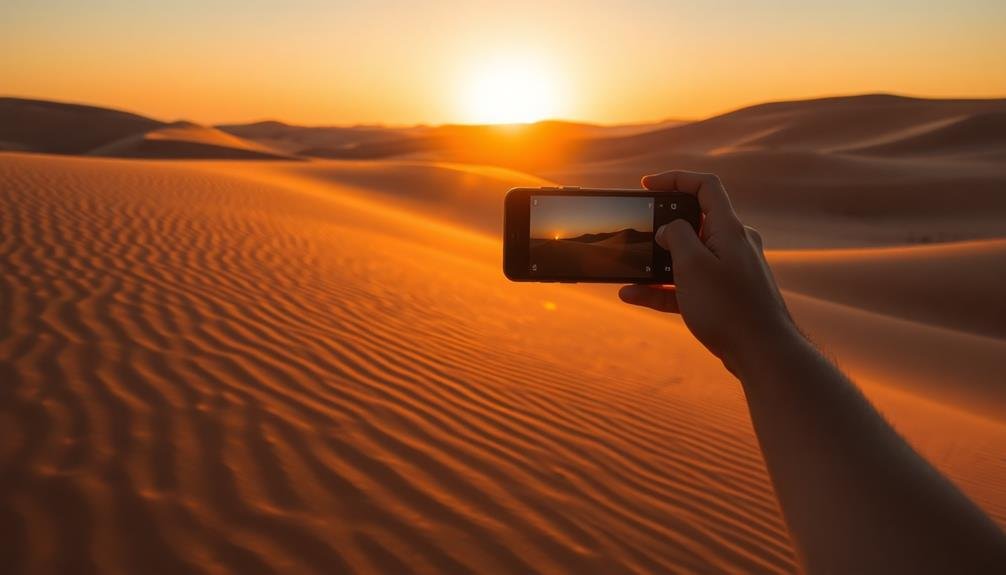
You can create powerful visual narratives by mastering light and shadow in your smartphone photography.
Use dramatic contrast to draw attention to key elements and evoke strong emotions in your images.
Experiment with mood-enhancing lighting techniques, such as backlighting or side-lighting, to add depth and atmosphere to your phone camera storytelling.
Dramatic Contrast Creation
Light-and-shadow play forms the backbone of dramatic contrast creation in phone camera storytelling. By mastering this technique, you'll elevate your visual narratives and captivate your audience.
Experiment with high-contrast scenes, where bright highlights and deep shadows coexist, creating a sense of depth and intrigue. Use your phone's exposure controls to emphasize either the brightest or darkest areas, leaving the rest in mystery.
To create dramatic contrast, consider these techniques:
- Shoot during golden hour for naturally contrasting warm light and cool shadows
- Utilize backlighting to create silhouettes and rim lighting effects
- Seek out strong geometric patterns that cast interesting shadows
- Experiment with chiaroscuro lighting for a moody, cinematic feel
- Use negative space to isolate subjects against contrasting backgrounds
Don't be afraid to push the boundaries of your phone's dynamic range. Embrace the limitations and use them creatively. Overexpose or underexpose intentionally to create striking visual effects.
Mood-Enhancing Lighting Techniques
Mastering mood-enhancing lighting techniques can transform your phone camera storytelling from ordinary to extraordinary. By leveraging light and shadow, you'll create atmospheric images that evoke powerful emotions and draw viewers into your narrative.
Start by observing natural light sources. Golden hour, just after sunrise or before sunset, bathes scenes in warm, soft light that's perfect for romantic or nostalgic moods. Harsh midday sun creates strong shadows, ideal for dramatic or tense story elements. Overcast days provide diffused light, great for melancholic or introspective shots.
Don't shy away from artificial lighting. Use lamps, street lights, or even your phone's flashlight to craft unique moods. Experiment with backlighting to create silhouettes or rim lighting for a mysterious ambiance. For indoor scenes, play with window light to add depth and dimension.
Learn to manipulate shadows. They can add mystery, create depth, or frame your subject. Use objects to cast interesting shadows, or position your subject to interact with existing shadows.
Incorporating Visual Metaphors

Through visual metaphors, your phone camera can transform ordinary scenes into powerful storytelling devices. By pairing seemingly unrelated objects or situations, you'll create deeper meaning and evoke emotions in your viewers.
Look for opportunities to juxtapose elements within your frame, using composition and perspective to highlight connections between ideas.
To incorporate visual metaphors effectively:
- Use contrasting elements to represent opposing concepts
- Leverage symbolism in everyday objects to convey abstract ideas
- Play with scale to emphasize power dynamics or importance
- Employ reflections or shadows to suggest hidden meanings
- Utilize color associations to reinforce emotional themes
When crafting visual metaphors, consider your story's core message and how you can represent it visually.
Don't be afraid to experiment with unconventional pairings or unexpected angles. Remember that subtlety often yields the most impactful results; you don't need to hit viewers over the head with your metaphor.
Instead, let them discover the layers of meaning within your image. By mastering the art of visual metaphors, you'll elevate your phone camera storytelling, creating images that resonate long after viewers have scrolled past.
Creating Emotional Connection Through Subjects
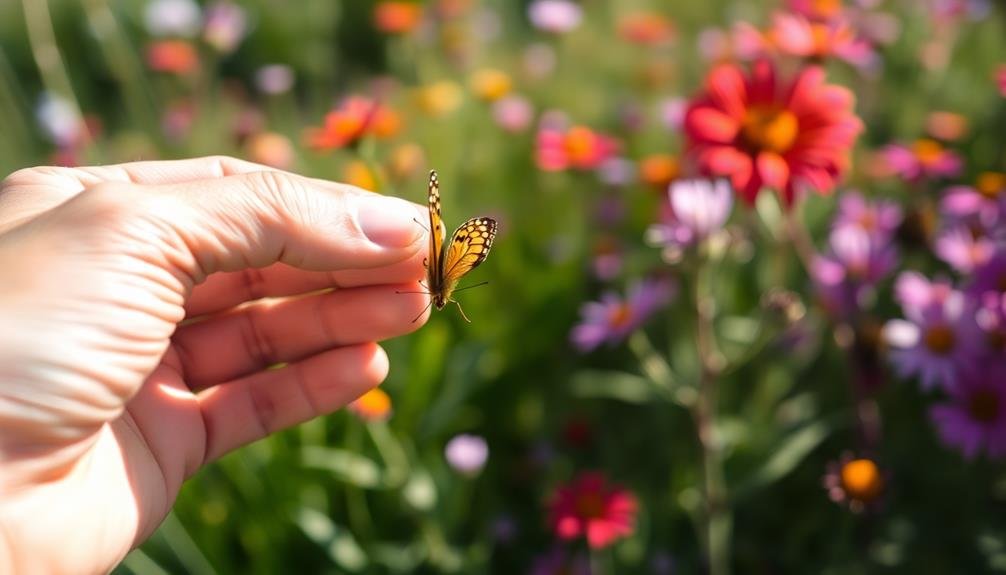
Capturing genuine emotions in your subjects is the cornerstone of creating a powerful emotional connection with your viewers. To achieve this, focus on candid moments and allow your subjects to be themselves. Encourage natural interactions and avoid overly posed shots. Pay attention to facial expressions, body language, and the overall atmosphere of the scene.
Use composition techniques to emphasize emotional elements. Frame your subjects in ways that highlight their expressions or interactions with their environment. Consider the rule of thirds, leading lines, and negative space to draw attention to the emotional focal points of your image.
Here's a quick reference guide for creating emotional connections:
| Emotion | Subject Focus | Composition Tip |
|---|---|---|
| Joy | Genuine smiles | Wide-angle, bright |
| Contemplation | Thoughtful gazes | Tight framing |
| Love | Tender interactions | Soft focus, bokeh |
Remember to be patient and observant. The most powerful emotional moments often occur when subjects are unaware of the camera. By mastering these techniques, you'll create images that resonate deeply with your audience and tell compelling stories through your phone camera.
Balancing Composition in Series
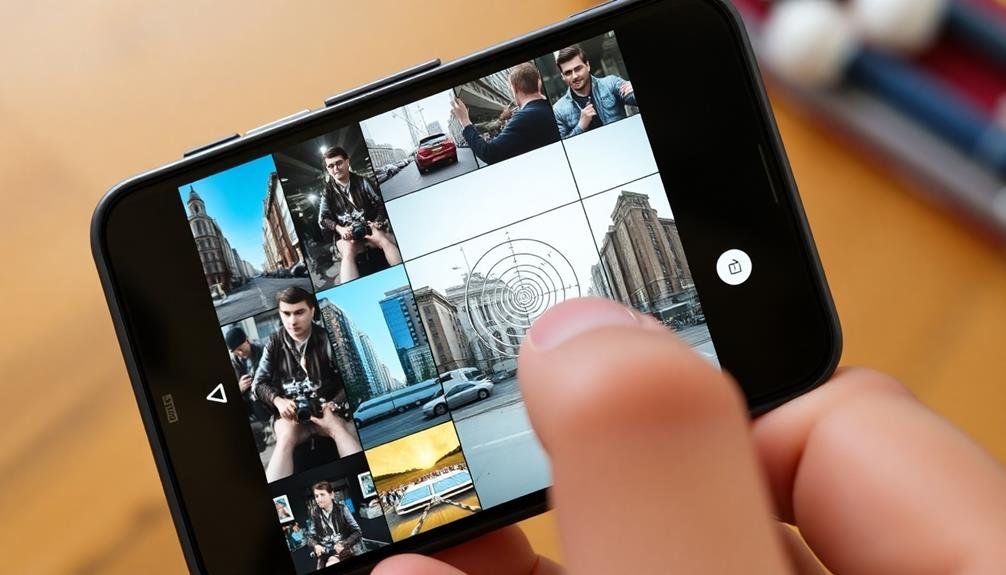
Creating a cohesive series of images requires careful attention to composition balance. When crafting a visual narrative with your phone camera, you'll need to evaluate how each image relates to the others regarding visual elements, color palette, and overall mood. Aim for consistency while avoiding repetition, ensuring that each photo contributes uniquely to the story you're telling.
To achieve balance in your series, focus on:
- Alternating between wide, medium, and close-up shots
- Maintaining a consistent color scheme or tone across images
- Varying subject placement within the frame
- Using recurring visual motifs or themes
- Balancing busy and minimalist compositions
As you curate your series, pay attention to the flow between images. Reflect on how one photo leads into the next, creating a seamless narrative experience for viewers.
You might arrange your photos chronologically, thematically, or based on visual similarities. Don't be afraid to experiment with different sequences to find the most compelling arrangement.
Enhancing Narrative With Editing Apps
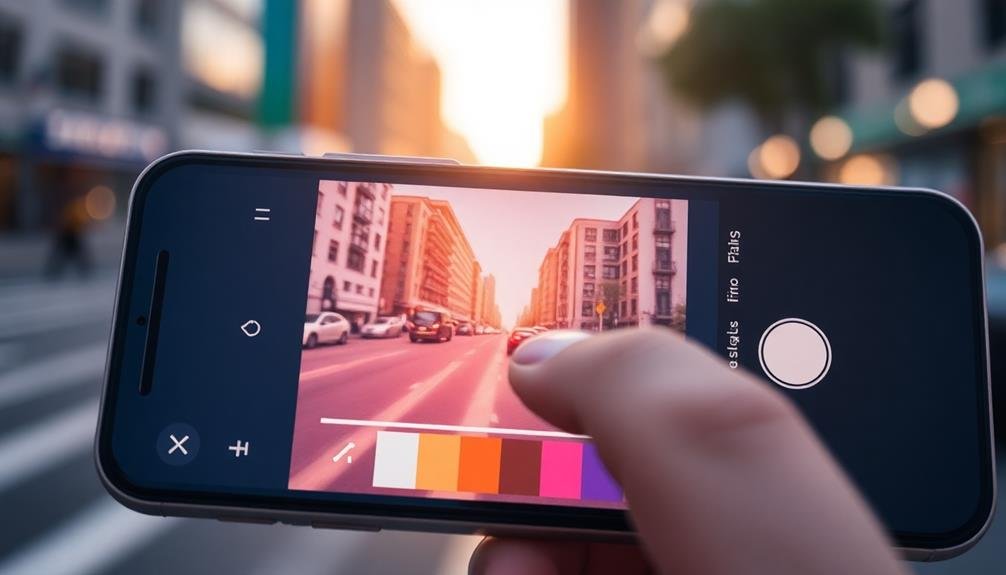
While balancing composition sets the foundation for your visual story, editing apps can elevate your narrative to new heights. These tools offer a range of features to enhance your images and strengthen your storytelling.
Start by experimenting with color grading to create a consistent mood across your series. Apps like VSCO and Snapseed allow you to adjust hues, saturation, and contrast to evoke specific emotions.
Next, use selective editing to draw attention to key elements in your photos. Darken or blur backgrounds to make your subject pop, or highlight specific colors to guide the viewer's eye.
Don't overlook the power of cropping and straightening. These simple adjustments can dramatically improve your composition and focus. For a cinematic feel, try adding subtle vignettes or film grain effects.
Text overlays can add context or dialogue to your visual narrative. Use apps like Over or Canva to incorporate typography that complements your images.
Developing a Consistent Visual Style

Throughout your storytelling journey, a consistent visual style serves as the glue that binds your narrative together. It's the visual language that communicates your story's mood, tone, and perspective.
To develop your unique style, experiment with different elements like color palettes, filters, and composition techniques. Once you've found a look that resonates with your story, stick to it across your images.
Consider these key aspects when crafting your visual style:
- Color grading: Choose a consistent color scheme that reflects your story's atmosphere
- Framing: Maintain a similar approach to composition and subject placement
- Lighting: Use consistent lighting techniques to create a cohesive mood
- Editing presets: Develop and apply uniform presets to maintain consistency
- Focal length: Stick to similar focal lengths for a unified perspective
Sharing Your Story on Social Media
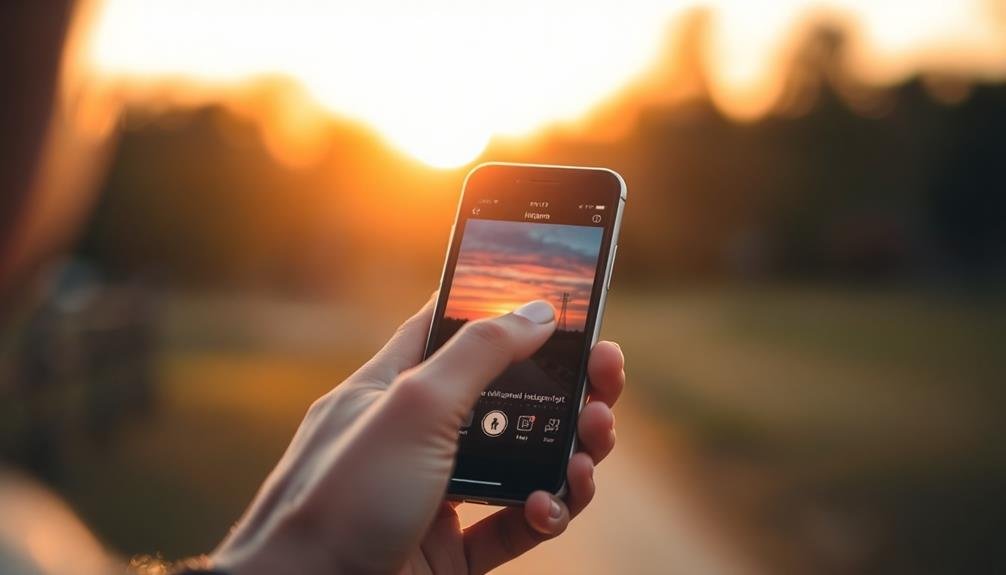
Social media platforms offer the perfect stage to showcase your phone camera storytelling. Choose the right platforms for your content, considering each one's strengths. Instagram and Pinterest are ideal for visual stories, while Twitter works well for bite-sized narratives with images.
Craft compelling captions that complement your visuals and provide context. Use hashtags strategically to increase discoverability, but don't overdo it. Engage with your audience by responding to comments and encouraging discussions about your stories.
Consider creating a series or theme for your posts to maintain consistency and keep followers interested. Use Instagram Stories or Facebook Live to share behind-the-scenes content or real-time updates.
Timing is essential, so post when your audience is most active. Experiment with different posting schedules to find what works best for your followers.
Don't forget to cross-promote your stories across platforms to reach a wider audience. However, tailor your content for each platform's unique features and audience expectations.
Lastly, track your analytics to understand which stories resonate most with your audience and refine your approach accordingly.
Frequently Asked Questions
How Can I Protect My Phone Camera Lens From Scratches and Damage?
To protect your phone camera lens, you'll want to use a protective case with a raised edge around the camera. You can also apply a lens protector film or tempered glass. Always keep your phone in a separate pocket when not in use.
What Are the Best Practices for Backing up Phone Camera Photos?
You should regularly back up your phone photos. Use cloud services like Google Photos or iCloud, and enable automatic backups. Don't forget to sync with your computer and consider using external hard drives for extra security.
How Do I Handle Ethical Concerns When Photographing Strangers for Storytelling?
When photographing strangers, you'll need to prioritize respect and consent. Always ask permission before taking photos, explain your purpose, and offer to share the results. If you're in public spaces, be mindful of privacy expectations.
Are There Any Legal Restrictions on Using Phone Camera Photos Commercially?
You'll need to contemplate copyright, privacy, and publicity rights when using phone photos commercially. Always get written permission from identifiable subjects. Be cautious with trademarked logos or private property. Consult a lawyer for specific legal advice.
How Can I Overcome Camera Shake When Shooting in Low-Light Conditions?
To reduce camera shake in low light, you'll want to stabilize your phone. Use a tripod or rest it on a steady surface. Enable night mode, if available. Alternatively, try increasing ISO or using a slower shutter speed.
In Summary
You've now got the tools to craft powerful visual narratives with just your phone. Remember, it's not about fancy equipment, but your unique perspective. Keep practicing these techniques, and you'll soon be telling compelling stories through your images. Don't be afraid to experiment and push boundaries. Your phone's always with you, so seize every opportunity to capture and share your world. The best storytellers are those who never stop learning and creating.

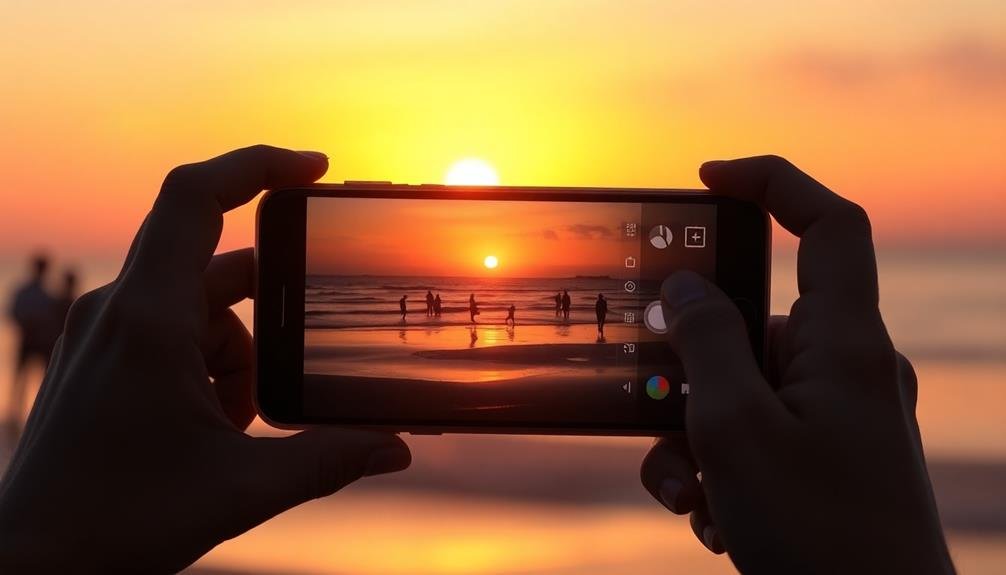



Leave a Reply